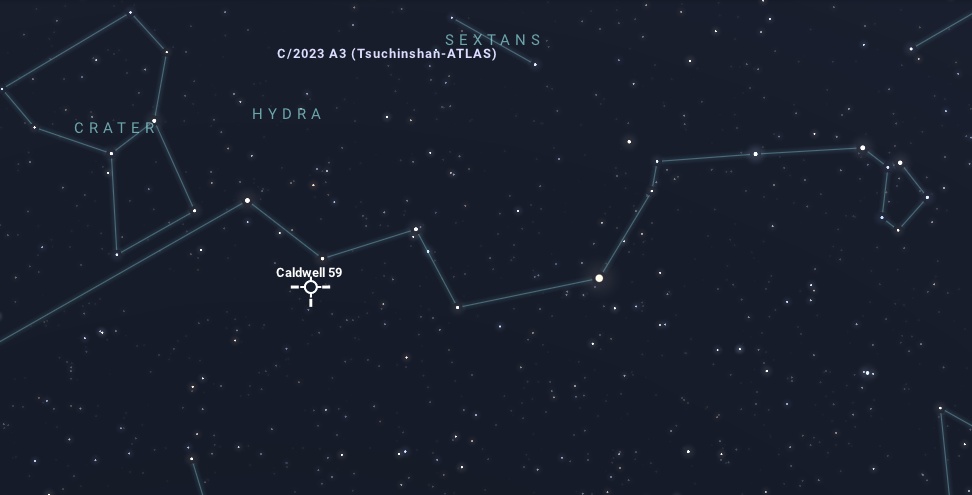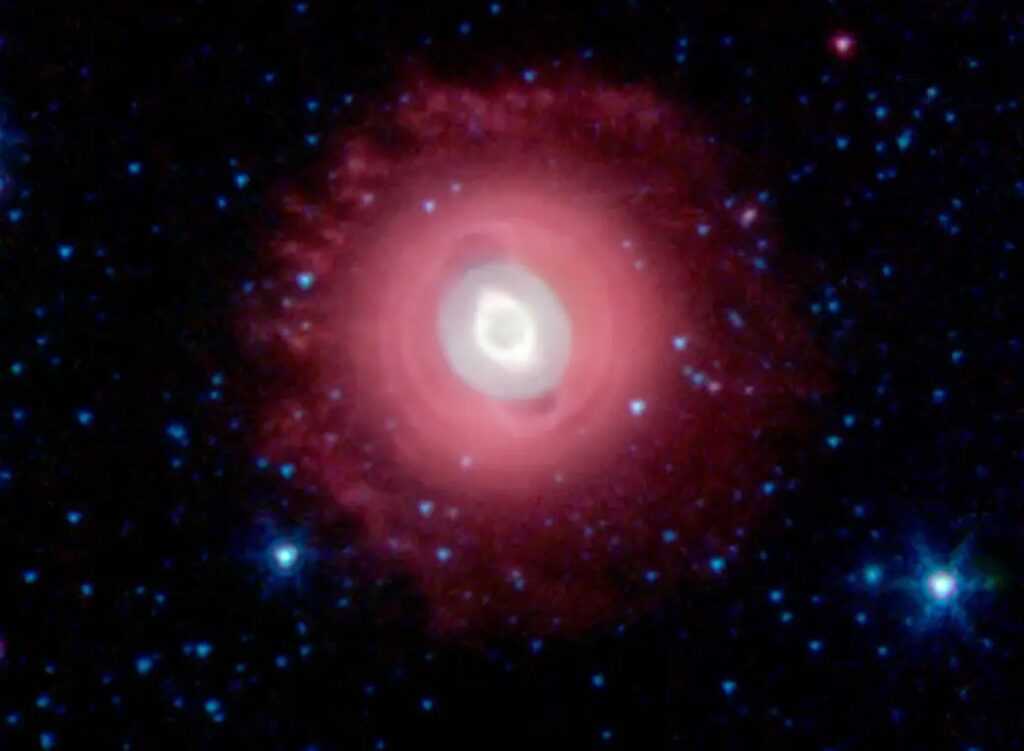NGC 3242, also known as the Ghost of Jupiter or Caldwell 59, is a striking planetary nebula situated in the constellation Hydra, approximately 1,400 light-years from Earth. This celestial object was first discovered by the renowned astronomer William Herschel in 1785. Its nickname, “Ghost of Jupiter,” stems from its visual similarity to the planet Jupiter when observed through early telescopes, although there is no actual connection between the two.
Physical Characteristics
NGC 3242 is a classic example of a planetary nebula, a type of emission nebula formed from the ionized gas ejected by a dying red giant star. When stars of low to intermediate mass (like our Sun) reach the final stages of their life cycle, they shed their outer layers, creating these glowing nebulae. At its heart lies a white dwarf, the remaining core of the original star, which now emits intense ultraviolet radiation, causing the surrounding gas to glow.
The central white dwarf of NGC 3242 is among the hottest known, with a surface temperature estimated to be around 75,000 K. This temperature plays a critical role in energizing the nebula, producing its vivid emissions.
Visually, the Ghost of Jupiter appears as a bright, round, bluish-green disk with a diameter of about 0.3 arcminutes, which translates to a physical size of roughly 0.3 light-years across. The outer regions of the nebula are more diffuse and irregular, extending beyond the bright central area and giving it a more complex structure. The brighter inner shell contrasts with the fainter, more ghostly outer extensions, contributing to its unique appearance.
Composition
The light from NGC 3242 exhibits prominent emission lines, particularly from ionized hydrogen (H-alpha) and oxygen (O III). The oxygen emission, in particular, gives the nebula its characteristic blue-green hue. These emission lines are the result of the intense ultraviolet radiation from the central white dwarf exciting the surrounding gas. Other elements like nitrogen and helium are also present, each contributing to the nebula’s complex spectral signature.
Evolutionary Stage
NGC 3242 represents the final visible phase in the life of a star similar to the Sun. The star that formed this nebula once had a mass comparable to our Sun, but after exhausting its nuclear fuel, it cast off its outer layers in a series of powerful stellar winds. What remains is the hot, dense core – the white dwarf – surrounded by the expanding shell of gas that was once part of the star’s outer atmosphere.
Eventually, the nebula will disperse completely, blending its gas into the surrounding interstellar medium. The white dwarf will continue to cool and dim over billions of years, ultimately becoming a cold, dark black dwarf. Planetary nebulae like NGC 3242 are crucial to understanding the late stages of stellar evolution and play a significant role in enriching the interstellar medium with heavier elements, which are later incorporated into new stars and planets.
Observation
NGC 3242 is a favourite among amateur astronomers due to its brightness and distinct appearance. It is easily visible through binoculars and small telescopes under dark skies, where its blue-green coloration is one of the most striking features. Larger telescopes can reveal more intricate details, including its faint outer extensions and inner structure, which sometimes resemble a “double-shelled” appearance.

Due to its location near the celestial equator, NGC 3242 is observable from both hemispheres, making it a target for stargazers worldwide. The best time to observe the Ghost of Jupiter in the Northern Hemisphere is during late winter to early spring, from January to March, when Hydra is high in the sky. For observers in the Southern Hemisphere, it is best viewed from summer to early autumn (also January to March).
The nebula’s striking blue-green disk stands out even in small instruments, and under good conditions, the central white dwarf can sometimes be glimpsed with medium-sized telescopes.



